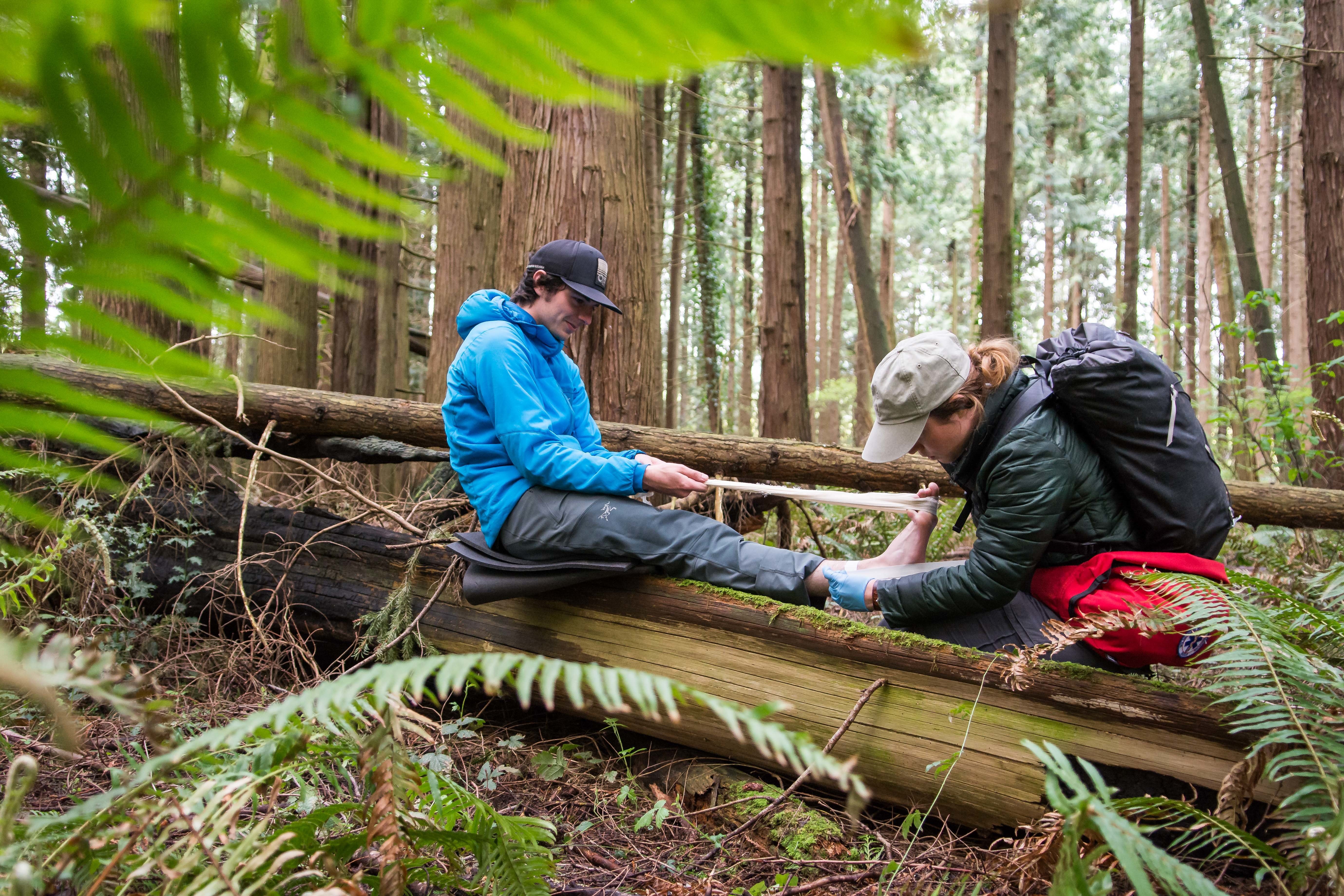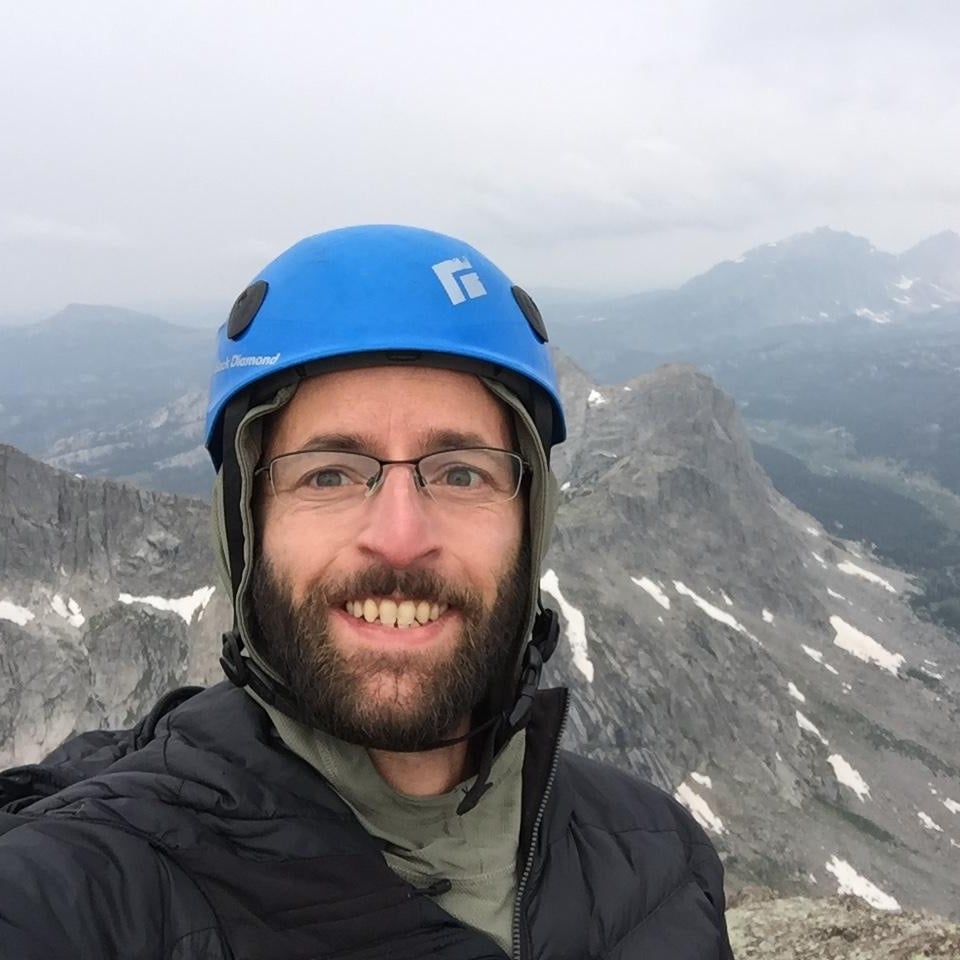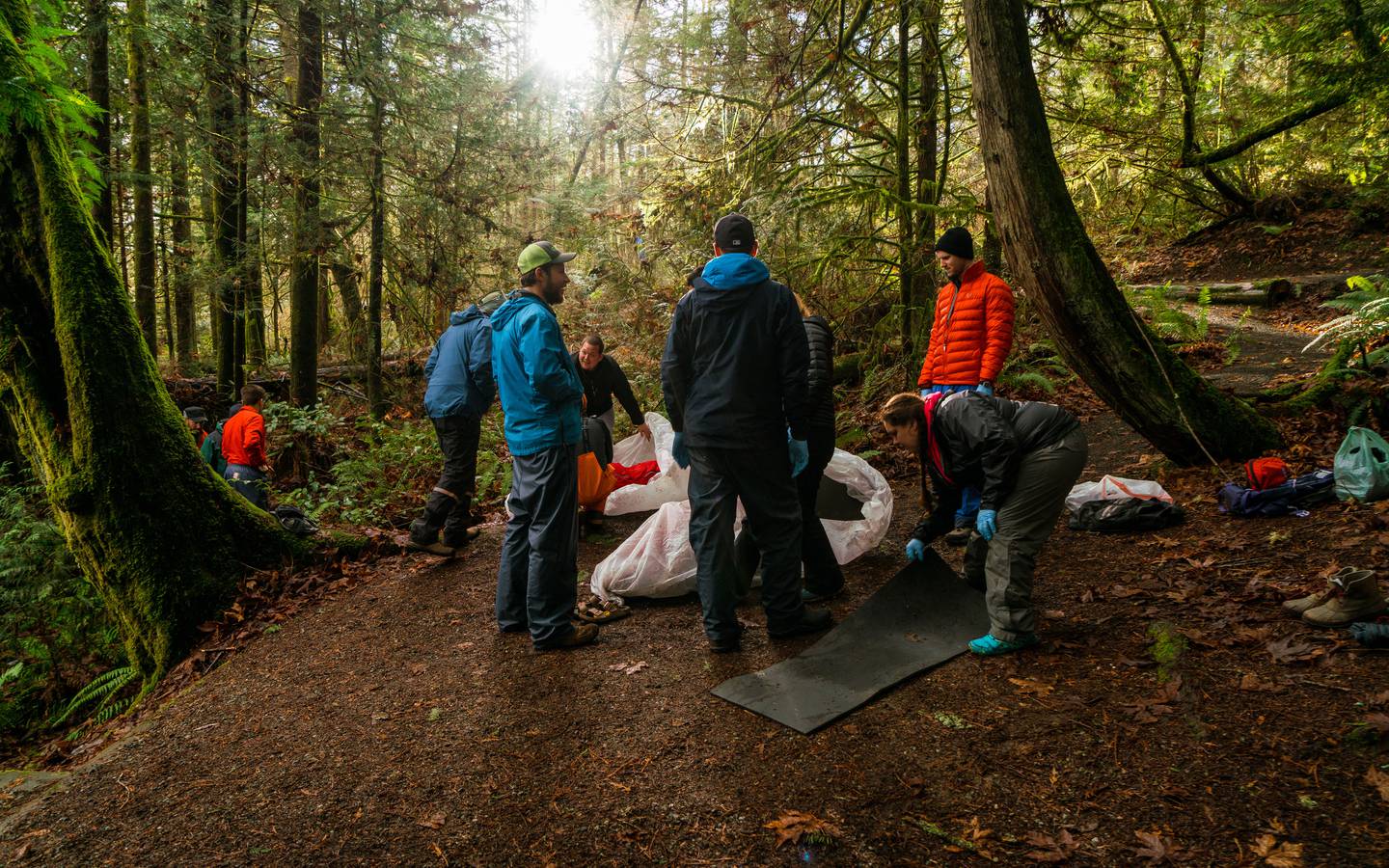
You love the outdoors. The beauty. The adventure. The chance to unplug. The quality time with family and friends, or even by yourself. Whether you choose to explore the wilds by hiking, on the water, with a fishing rod in hand, or up a mountain road with your camper, the remoteness and rawness of it all is likely part of the appeal. Being far up the trail or out of cell service also comes with inherent risk. What if you, a friend, or a family member, gets sick or injured and you don't have easy access to medical care?
Enter the NOLS Wilderness First Aid course, a fun, hands-on introduction to preventing, recognizing, and treating common injuries and illnesses that can happen in the outdoors. These two-day courses, taught all around the U.S. and the world, are great training for anyone who loves to recreate outside, no matter your experience level. By the end you’ll have the confidence and training to take care of those around you.
Here are a few reasons why wilderness first aid training is the perfect next step for your outdoor adventures:
You'll Learn Practical Skills So You're Ready to Respond Quickly
You need training that focuses on the injuries and illnesses you're most likely to see on a trip. Wilderness First Aid courses teach responses to what's common, more serious emergencies, and everything in between, including:
- Evacuation plans and emergency procedures
- Spinal cord injuries
- Shock
- Head injuries
- Wound management
- Sprains and strains
- Splinting broken bones
- Hypothermia and frostbite
- Heat stroke
- Altitude illness
- Lightning
- Allergic reactions and anaphylaxis
- First aid kits (What to bring and how to use what you have)
How do we know? Because the first aid skills taught on your course are based on NOLS’ data on what actually happens on remote outdoor trips, gathered from over 50 years of NOLS Expeditions (hiking, rafting, skiing, and more, all around the world).
Be Self-Sufficient When Help Isn't Readily Available
Having the ability to splint a broken bone with a tent pole, create an arm sling using only a jacket, or effectively warm someone with hypothermia with the contents of your backpack when help is delayed or unavailable? That’s pretty powerful.
Wilderness first aid skills are all about improvising with the gear and equipment you have on hand to manage any medical situation you encounter.
Boost Your Confidence
Confidence comes from experience. When you start a course, you might not know a lot. But when you finish, through real-life scenarios and classroom time, you'll have learned about—and practiced—how to respond to common outdoor emergencies. These are the experiences that will give you the confidence to step up and take charge in any situation.
Learn from the Best
Your instructor might be a physician, flight paramedic, search-and-rescue team member, ski patroller, or wilderness guide. NOLS instructors know how to teach wilderness medicine and answer your questions because they've been there.
Your course will be taught by a team of NOLS instructors who have extensive medical and wilderness leadership experience. And because they're professional teachers, they're focused on you and what you need to know for the activities you do.
.jpg)
You Won't be Fooled by Common Myths and Misconceptions
No, it isn’t correct (or safe) to suck poison out of a snakebite. You shouldn’t be peeing on a jellyfish sting either. Where is the best place to be in a lightning storm? What should you do with a knocked out tooth or an accidentally amputated finger?
The first aid treatments you learn on your course are constantly updated based on the latest medical research, which is a great alternative to doing something you saw on TV or just “figuring it out.”
Earn a Certification
You’ll earn a Wilderness First Aid certification that is great for taking a leadership role with your group or club, getting a job in the outdoors, or simply sharing your experience with your family and friends. It’s never too late to learn something new and further develop yourself as an outdoor enthusiast and as an individual.
Being able to say you’re certified in Wilderness First Aid is pretty cool too!
There Is a Course Near You
NOLS offers over 1,000 courses each year in all 50 states, as well as in 43 countries around the world. That’s a lot of options! And it means no matter where you live, there’s likely a course coming up in your area.
It may be one of the most important things you ever do.
Written By
Ben Lerman
Ben is the former NOLS Wilderness Medicine Marketing Coordinator and a Wilderness First Responder graduate. He enjoys rock climbing, backpacking, kayaking, and hopes to someday adventure in the mountains on each of the 7 continents.



